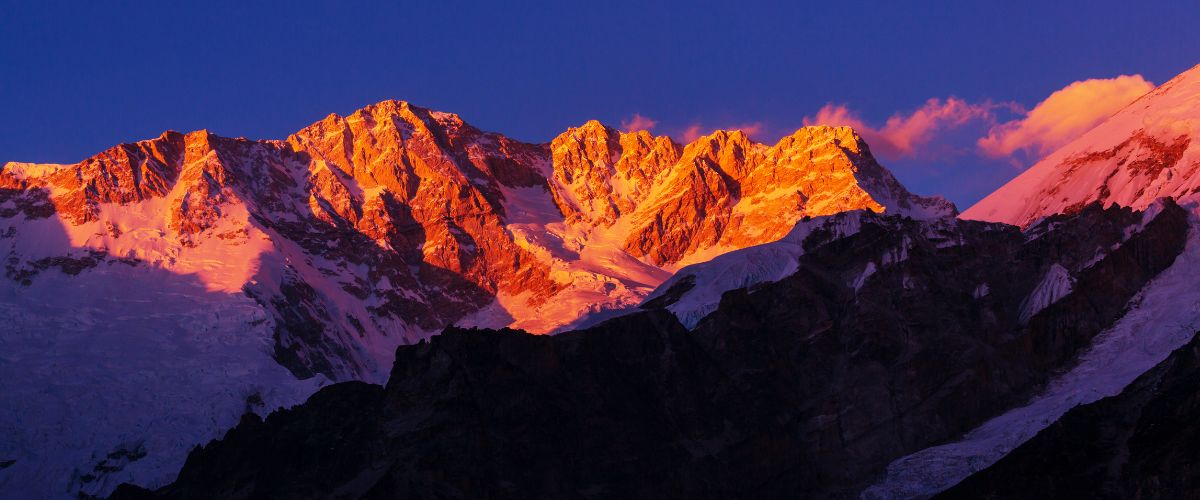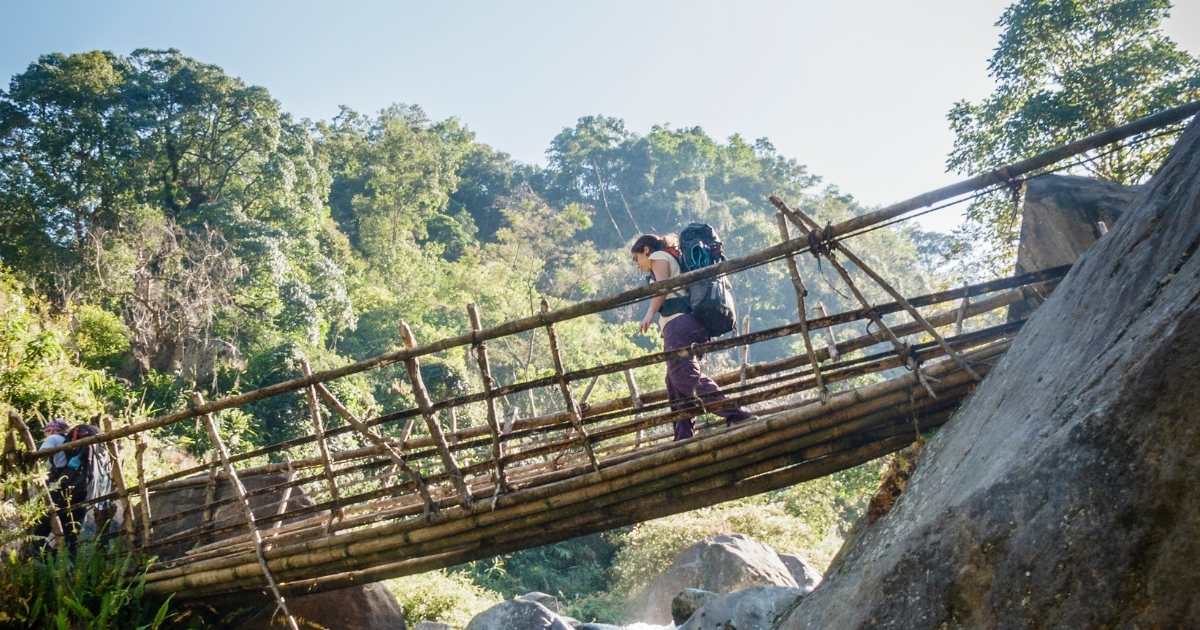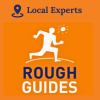
Kanchenjunga Trek: Complete Guide

Kanchenjunga Trek: Complete Guide
swotah travel
1924
14, 09 2022
Everyone knows Mount Everest and the Everest Base Camp Trek, but did you know there are other equally amazing treks in the northeast of Nepal?
Mount Kanchenjunga lies on the border between Sikkim, India, and Nepal. On the Nepal side, it is in Tapeljung District in the far east of the country.
This area has three treks: Kanchenjunga South Base, Kanchenjunga North Base, and the Kanchenjunga Circuit Trek, which covers both base camps.
To reach the area, you need to fly from Suketar and walk down to Tapeljung. Alternatively, you can fly to Bhadarpur, in the lowlands, and with a more regular flight schedule, then take a 10-hour road trip to Taplejung.

This area was not open for trekkers until the mid-1980s and is still protected by the Kanchenjunga Conservation Area. This means the area has pristine flora and fauna unique to this part of the country.
Difficulty
While there are less strenuous treks such as the Annapurna Trek, and there are even easy walking tours in Nepal, you need a pretty good level of fitness for the Kanchenjunga area. I would recommend previous trekking experience to tackle any of these routes. The number of days is 15 days for South Base Camp, 19 days for North Base Camp and 22 days for the circuit.
How to Decide Which Trek to Do?
If you have enough time, even the longer trek is possible, then you can base your decision on what interests you.
The Kanchenjunga South Base Camp trek explores the Yalung Glacier and climbs through pristine forests, agricultural fields, and villages. Base camp is situated at Ramche (4,610m), and from there, it is possible to hike to a viewpoint ridge which amazing views of Kanchenjunga South Face and other peaks. Highlights include learning about the lifestyle of the Rai and Limbu people and walking through the Kanchenjunga Conservation Area. This area also falls under the Sacred Himalayan Landscape initiative of the World Wild Life Fund (WWF). It is home to snow leopards, red pandas, and Asian black bears, and much more. There is plenty to see for bird lovers, including the golden-breasted fulvetta.
The Kanchenjunga North Base Camp trek also offers views of snow-capped mountain peaks, subtropical lowlands, rhododendron and alpine forests, and glaciers. The base camp itself is situated at Pangpema (5,100m), reached by a high track following the moraine of the Kanchenjunga Glacier. The base camp sits above the glacier and offers breathtaking views of the north face of Kanchenjunga and Yalung Kang. Highlights of this trek include alpine meadows, high-altitude wetlands and glaciers on the lap of the mountain. Plus, meeting Rai, Sherpa and Tamang people.
The Kanchenjunga Circuit trek visits both the north and south base camps. The landscape here is filled with rivers, waterfalls, rhododendrons and pine forests, the Yalung Glacier, and green meadows. And of course, mountains! Highlights here include the glacial lakes, diverse flora and fauna, and the monasteries of Ramtang and Oktang.

Each trekking route brings you close to amazing mountains which include the four subsidiary summits of Kanchenjunga which are each over 8,000m. There are also approximately twenty peaks exceeding 7,000m, the highest being Kambachen at 7,903m. Plus many peaks over 6,000m and five major glacial systems, three of which flow into Sikkim while the waters of the Kanchenjunga and Ylang glaciers flow into the Tamor River in Nepal.
Definitely, you are in the heart of less visited mountains and glaciers in this region. What an experience!
Find out more about these treks here.
What do you Need to Go to the Kanchenjunga Area?
As I said, having some trekking knowledge and experience would be sensible before setting out to this remote area. And please note, this is not an area you can go to alone. You must go through a trekking agency for your safety and because it is a restricted area.
Permits: A restricted area entry permit is required, which is issued in Kathmandu. You are required to be a minimum of two trekkers and a guide to obtain this permit, and a Kanchenjunga Conservation Area Permit is also required.
What is the Best Time to Visit Kanchenjunga Area?
Like the whole of Nepal, the best time to visit is from March to the end of May. The sky will be clear and the views wonderful. There should be no snowfall or rain – both of which make the trails more difficult than at other times.
Late December to early March is very cold, and some teahouses/ lodges will be closed. The Sele Le Pass will be extremely hard to find as it will be under snow. The ground will be slippery with snow and proper winter wear (including crampons) are required. This time is most suited to those experienced to trekking in snow conditions.
June to mid-September is the monsoon season with lots of clouds and rain. When not raining, however, the skies will be very blue! Watch out for leeches! Landslides are common in this season and the trail slippery. Be aware rain can make you feel less than enthusiastic on the trails and less willing to get out of bed in the morning!
Late September to mid-December is the other great time to trek in Nepal. The air is fresh and clean and mountains clear!
How is the Accommodation?
While some areas like the lower altitudes of the Everest Treks, have quite luxurious lodges, this is a tea house trek, and there could be camping in some locations. You should discuss this with your Nepal travel agency before setting off. In some areas there is better accommodation, but do not expect much in the way of luxury in the more remote areas!
How is the Food?
As on most treks in Nepal Dal bhat is always on the menu! As this is an area closer to Tibet Thukpa (a Tibetan noodle dish) is also a staple. Unlike places like the treks around Annapurna western food is not readily available. Bring snacks with you.
What Should I Take with Me?
There is pretty much a standard for all treks list of stuff to take with you, which I will list below. But there are a few other things to take into remote areas.
A portable solar panel to recharge your electronics as there is limited or no electricity in this area. For those areas with electricity, bring an adapter that fits any kind of socket.
Phone networks do not work in some areas so some kind of device for basic messaging in emergency situations would be useful.
Packing List for Trekking in Kanchenjunga
Basically - layers! While daytime will be hot and sunny on some treks, mornings and evenings can be extremely cold – and anything in between!
-
Sun lotion
-
Sun glasses – even when not sunny, you are often at high altitude when the effects of the sun’s rays are stronger.
-
Sun hat
-
A warm hat for cold weather. You may even need it in bed too.
-
Buff or scarf. Buff is easier to carry, and you can use it for other things too i.e., mask, headband.
-
When buying/ packing underwear go for something that is both quick drying (for washing on the trail) and which absorb moisture from your body.
-
Trekking shirts* are great because they are especially made for keeping you dry on treks. I suggest 3 or 4 of these for longer treks.
-
Fleece jacket* for warmth.
-
Jacket for over the fleece such as a down jacket*
-
Rain jacket* for the obvious!
-
Rain over-trousers if trekking in the monsoon season
-
Trekking trousers and shorts* – again those made specifically for trekking are best
-
Gloves – both inner gloves and thicker insulation gloves if you are going very high or into snowy conditions
-
Hiking socks – again 3 or 4 pairs
-
Hiking boots – wear them in before going on the trek!
-
Footwear like trainers or sandals for in the lodges and to give your feet a rest from the boots
-
Good backpack and day pack
-
Sleeping bag** and inner sleeping bag/sheet
-
Quick drying towels
-
Hiking poles*
-
Headlight – easier to use than the traditional hand-held torch
-
Feminine hygiene products
-
Wet wipes – maybe not many showers on the way or too cold to strip off to use them.
-
Water purifier tablets or Life Straw
-
Your usual toiletries like lip balm and toothpaste
-
Any medicines you usually use as well as a basic first aid kit
-
Passport/ money/ insurance
*You can buy in Kathmandu on your arrival
** You can hire in Kathmandu. Some trekking agencies will provide a sleeping bag for their clients.
Let’s Go!
Hopefully, this guide will give you some idea about the Kanchenjunga treks and help you decide if this area is for you. Please discuss further with your Nepal tour agency and put Kanchenjunga on your list of top things to do in Nepal!
NEWSLETTER SIGNUP
Sign up to receive our trip ideas and travel offers!
Get updates and Exclusive Offers up to 20% Discount








